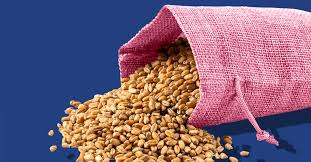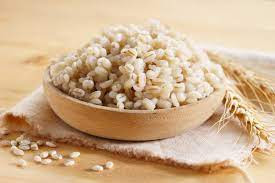EXPLORING PLANT MALTODEXTRIN: EXTRACTION PROCESS AND TYPES
Introduction:
Maltodextrin, a versatile carbohydrate widely used as a food additive, plays a vital role in enhancing the texture, flavor, and shelf life of processed foods. While maltodextrin can be derived from various sources, plant-based maltodextrins are particularly popular due to their availability and desirable properties. In this comprehensive article, we will delve into the detailed extraction process and explore different examples of plant maltodextrins, highlighting their unique characteristics and applications.
Maltodextrin, a versatile carbohydrate widely used as a food additive, plays a vital role in enhancing the texture, flavor, and shelf life of processed foods. While maltodextrin can be derived from various sources, plant-based maltodextrins are particularly popular due to their availability and desirable properties. In this comprehensive article, we will delve into the detailed extraction process and explore different examples of plant maltodextrins, highlighting their unique characteristics and applications.
Extraction Process of Plant Maltodextrin:
The extraction process of maltodextrin from plants involves several crucial steps that ensure the production of high-quality maltodextrin. While there may be slight variations depending on the specific plant source, the general process encompasses the following stages:
Plant Selection:
The first step in the extraction process is carefully selecting the plant source for maltodextrin production. Common plant sources include corn, rice, potato, wheat, tapioca, and barley. Each plant source possesses distinct starch properties and contributes unique attributes to the resulting maltodextrin.
Cleaning and Preparation:
The selected plant material undergoes thorough cleaning to eliminate any impurities, such as dirt, debris, and other unwanted components. After cleaning, the plant material is usually ground or milled to break it down into smaller particles. This process increases the surface area and facilitates subsequent processing steps.
Starch Extraction:
The ground plant material is mixed with water to create a slurry. This slurry is subjected to a process known as wet milling or steeping. During steeping, the slurry is soaked in water and mechanically agitated to separate the starch granules from other plant components like proteins, fiber, and lipids. Separation techniques, such as screens or centrifuges, are then employed to isolate the starch from the liquid portion of the slurry.
Hydrolysis:
The extracted starch is subjected to hydrolysis, a process that breaks down the starch molecules into shorter chains of glucose units. Enzymatic hydrolysis is the most common method employed for this step. Enzymes like amylase or glucoamylase are added to the starch solution, triggering the breakdown process. These enzymes catalyze the hydrolysis reaction, converting the starch into maltodextrins—a mixture of glucose chains with varying lengths. The hydrolysis process is carefully controlled by optimizing temperature and pH conditions to ensure efficient enzyme activity.
Purification:
The hydrolyzed starch solution, now containing maltodextrins, undergoes a purification step to remove any solid impurities or undigested plant material. Purification is typically achieved through filtration or centrifugation processes, resulting in a cleaner starch hydrolysate.
Concentration and Drying:
The purified starch hydrolysate is concentrated to increase the solids content. Concentration is achieved through evaporation techniques, reducing the water content of the solution. The concentrated solution is then transformed into a powdered form through a drying process. The most common drying method used is spray drying, where the concentrated solution is sprayed into a hot chamber. The rapid evaporation of water leaves behind fine maltodextrin powder particles. Alternatively, other drying methods like drum drying or freeze drying may be employed based on specific requirements.
Types of Plant Maltodextrins:
Plant maltodextrins can be derived from various plant sources, each offering distinct properties and applications. Here are some common examples:
Corn Maltodextrin:
Corn maltodextrin, extracted from corn starch, is the most widely used and readily available form of maltodextrin. It is characterized by its neutral taste, excellent solubility, and versatility. Corn maltodextrin finds extensive use in food applications such as powdered mixes, beverages, snacks, and dairy products.
Corn maltodextrin, extracted from corn starch, is the most widely used and readily available form of maltodextrin. It is characterized by its neutral taste, excellent solubility, and versatility. Corn maltodextrin finds extensive use in food applications such as powdered mixes, beverages, snacks, and dairy products.
Rice Maltodextrin:
Rice maltodextrin is derived from rice starch and is a popular choice as a gluten-free alternative to corn-based maltodextrin. It serves as a useful ingredient in baby food, sports nutrition products, and various food formulations.
Rice maltodextrin is derived from rice starch and is a popular choice as a gluten-free alternative to corn-based maltodextrin. It serves as a useful ingredient in baby food, sports nutrition products, and various food formulations.
Potato Maltodextrin:
Derived from potato starch, potato maltodextrin acts as a bulking agent, stabilizer, or thickener in food products. It possesses excellent water absorption properties and is commonly used in instant soups, sauces, desserts, and processed foods.
Derived from potato starch, potato maltodextrin acts as a bulking agent, stabilizer, or thickener in food products. It possesses excellent water absorption properties and is commonly used in instant soups, sauces, desserts, and processed foods.
Wheat Maltodextrin:
Wheat maltodextrin, derived from wheat starch, is a texturizer, binder, or filler utilized in the food industry. It is important to note that wheat maltodextrin may contain gluten and is not suitable for individuals with gluten-related disorders. It finds applications in bakery products, convenience foods, and certain industrial processes.
Wheat maltodextrin, derived from wheat starch, is a texturizer, binder, or filler utilized in the food industry. It is important to note that wheat maltodextrin may contain gluten and is not suitable for individuals with gluten-related disorders. It finds applications in bakery products, convenience foods, and certain industrial processes.
Tapioca Maltodextrin:
Tapioca maltodextrin, extracted from the cassava root, is valued for its neutral taste, excellent solubility, and thickening properties. It is commonly used in powdered food and beverage applications, including dessert mixes, powdered beverages, seasoning blends, and encapsulation of flavors and fats.
Tapioca maltodextrin, extracted from the cassava root, is valued for its neutral taste, excellent solubility, and thickening properties. It is commonly used in powdered food and beverage applications, including dessert mixes, powdered beverages, seasoning blends, and encapsulation of flavors and fats.
Barley Maltodextrin:
Although less common than other plant sources, barley maltodextrin is derived from barley starch. It may find applications in specialty food products or as an ingredient in brewing and distilling processes.
Although less common than other plant sources, barley maltodextrin is derived from barley starch. It may find applications in specialty food products or as an ingredient in brewing and distilling processes.
Conclusion:
Plant-based maltodextrins offer a wide array of options for food manufacturers, providing functional and versatile carbohydrate additives. The extraction process, involving plant selection, cleaning, starch extraction, enzymatic hydrolysis, purification, concentration, and drying, plays a crucial role in obtaining high-quality maltodextrin.
Plant-based maltodextrins offer a wide array of options for food manufacturers, providing functional and versatile carbohydrate additives. The extraction process, involving plant selection, cleaning, starch extraction, enzymatic hydrolysis, purification, concentration, and drying, plays a crucial role in obtaining high-quality maltodextrin.
Understanding the source of maltodextrin is essential, particularly for individuals with dietary restrictions or allergies. Whether derived from corn, rice, potato, wheat, tapioca, or barley, plant-based maltodextrins continue to play a vital role in the food industry, enhancing the texture, flavor, and functionality of countless processed foods we consume daily.
.JPG)









Comments
Post a Comment